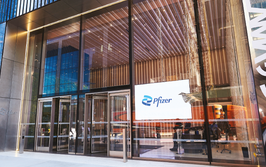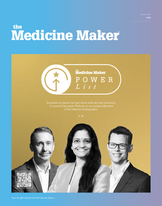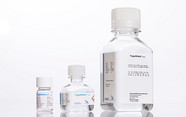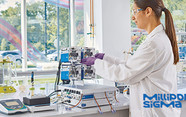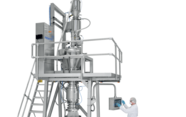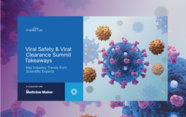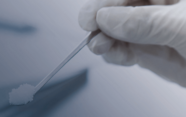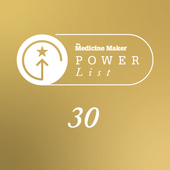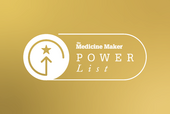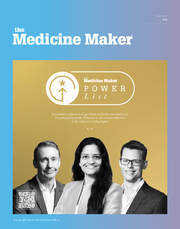
AMF’s 2026 AMR Strategy, Revealed
The Access to Medicine Foundation has developed the 2026 AMR Benchmark to recognize and promote urgency in the ongoing AMR challenge.
Drug-resistant infections could contribute to 8.22 million deaths annually by 2050. Recognizing the urgency of this issue, the Access to Medicine Foundation (AMF) has developed the 2026 AMR Benchmark, an analytical framework designed to track the contributions of pharmaceutical companies in keeping antimicrobial resistance (AMR) under control. The new benchmark evaluates 26 companies across three core research areas: R&D, responsible manufacturing, and appropriate access and stewardship.
The need for a new focus
Since the WHO declared AMR a global threat in 2014, progress has been made in raising awareness and initiating preventive measures. However, challenges – particularly in low- and middle-income countries (LMICs) – persist. These regions bear the highest burden of AMR-related deaths (more than 80 percent). Without decisive action from pharmaceutical companies, the global burden of drug-resistant infections will continue to rise, with devastating health and economic consequences. The economic cost of inaction is projected to reduce global output by $1.7 trillion annually by 2050, making investment in AMR mitigation a necessary priority.
New antimicrobial treatments are needed, but big pharmaceutical investment in antibiotic innovation has declined, leaving smaller players to drive innovation with minimal support. The 2026 Benchmark evaluates the R&D pipeline of both large and SME pharmaceutical companies, focusing on their contributions to developing effective antibacterial and antifungal medicines and vaccines.
Key updates include:
- A focus on the WHO’s Priority Pathogen Lists for identifying urgent R&D needs.
- An assessment of innovation based on the WHO’s innovation criteria, such as new targets, modes of action, and classes of antibiotics.
- Greater emphasis on companies’ access and stewardship plans to ensure broad availability and appropriate use of newly developed drugs.
- A stronger pipeline for new antimicrobials, with SMEs leading development but facing significant financial and market challenges.
- New incentives and collaborations to sustain large pharma interest and innovation.
- Investments in direct pipeline health, assessing whether projects address critical priority pathogens.
Responsible manufacturing
Antibiotic waste released during pharmaceutical manufacturing contributes to environmental contamination, accelerating AMR development. To counteract this, the AMF calls on companies to adopt sustainable manufacturing practices that minimize environmental risks.
The 2026 Benchmark evaluates:
- The implementation of waste management strategies at company-owned and supplier facilities.
- Compliance with discharge limits based on predicted no-effect concentrations for resistance selection.
- Transparency in reporting waste treatment practices and antibiotic discharge levels.
- Timely and publicly shared raw surveillance data.
- Enhanced expectations for standardized surveillance methodologies to improve data reliability.
- Transparency in monitoring resistance trends.
These measures align with WHO’s 2024 guidance on responsible manufacturing, reinforcing the industry's commitment to minimizing the environmental impact of antibiotic production.
Appropriate access and stewardship
Ensuring access to antibiotics while preventing their misuse is key to AMR mitigation. The Benchmark assesses company efforts in expanding access to both on- and off-patent antimicrobials in LMICs, ensuring that critical medications are available where they are needed most.
Updates for 2026 include:
- Integrated assessment of access and stewardship at the product level.
- New indicators tracking patient reach and the effectiveness of access strategies.
- A stronger emphasis on responsible promotional practices and ethical interactions with healthcare professionals.
- Many essential antibiotics and antifungals remain unavailable or unaffordable in LMICs.
- Monitored patient reach to measure access impact.
- Combined access and stewardship strategies to ensure drugs are used appropriately.
- Expanded registration of essential medicines, using collaborative mechanisms to streamline approvals.
With AMR now a high-priority issue on the global political agenda, pharmaceutical companies must align with international efforts, such as the United Nations’ pledge to reduce AMR-associated deaths by 10 percent by 2030. While it will be interesting to see how the US withdrawal from the WHO will affect these targets, the 2026 AMR Benchmark serves as both a tool and a roadmap that aims to give pharmaceutical companies the skills and support to adopt best practices, and innovate responsibly. Through continuous evaluation and targeted interventions, the AMF 2026 Benchmark also aims to generate an industry-wide shift in focus to ensure that life-saving antimicrobial treatments remain effective for future generations.
Following a Bachelor’s degree in English Literature and a Master’s in Creative Writing, I entered the world of publishing as a proofreader, working my way up to editor. The career so far has taken me to some amazing places, and I’m excited to see where I can go with Texere and The Medicine Maker.






